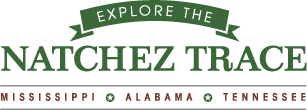TUPELO, MS – A new National Park Service (NPS) report shows that 11,375,658 visitors to Mississippi’s National Park Service units in 2016 spent $390 million in local communities. That spending supported 5,580 jobs in the state and had a cumulative benefit to the local economies of $447 million.
“The National Park Service sites within Mississippi include Natchez National Historical Park, Vicksburg National Military Park, Brices Cross Roads National Battlefield Site, Natchez Trace National Scenic Trail, Tupelo National Battlefield, and part of the Gulf Islands National Seashore” said Parkway Superintendent Mary Risser. “We attract visitors from across the U.S. and around the world who come here to experience the state’s parks and then spend time and money enjoying the services provided by our neighboring communities. “
“The National Park Service is proud to have been entrusted with the care of America’s most treasured places and delighted that the visitors we welcome generate significant contributions to the local, state, and national economies,” added Natchez National Historical Park Superintendent Kathleen Bond.
“The peer-reviewed visitor spending analysis was conducted by economists Catherine Cullinane Thomas of the U.S. Geological Survey and Lynne Koontz of the National Park Service,” continues Vicksburg Superintendent Bill Justice. “The report shows $18.4 billion of direct spending by 331 million park visitors in communities within 60 miles of a national park. This spending supported 318,000 jobs nationally; 271,544 of those jobs are found in these gateway communities. The cumulative benefit to the U.S. economy was $34.9 billion.”
According to the 2016 report, most park visitor spending was for lodging (31.2 percent) followed by food and beverages (27.2 percent), gas and oil (11.7 percent), admissions and fees (10.2 percent) and souvenirs and other expenses (9.7 percent), local transportation (7.4 percent), and camping fees (2.5%).
Report authors this year produced an interactive tool. Users can explore current year visitor spending, jobs, labor income, value added, and output effects by sector for national, state, and local economies. Users can also view year-by-year trend data. The interactive tool and report are available at the NPS Social Science Program webpage: go.nps.gov/vse. The report includes information for visitor spending at individual parks and by state.
To learn more about the economic impact of all national park units in Mississippi, and how the National Park Service works with communities to preserve local history, conserve the environment, and provide local recreational opportunities, go to www.nps.gov/Mississippi.
